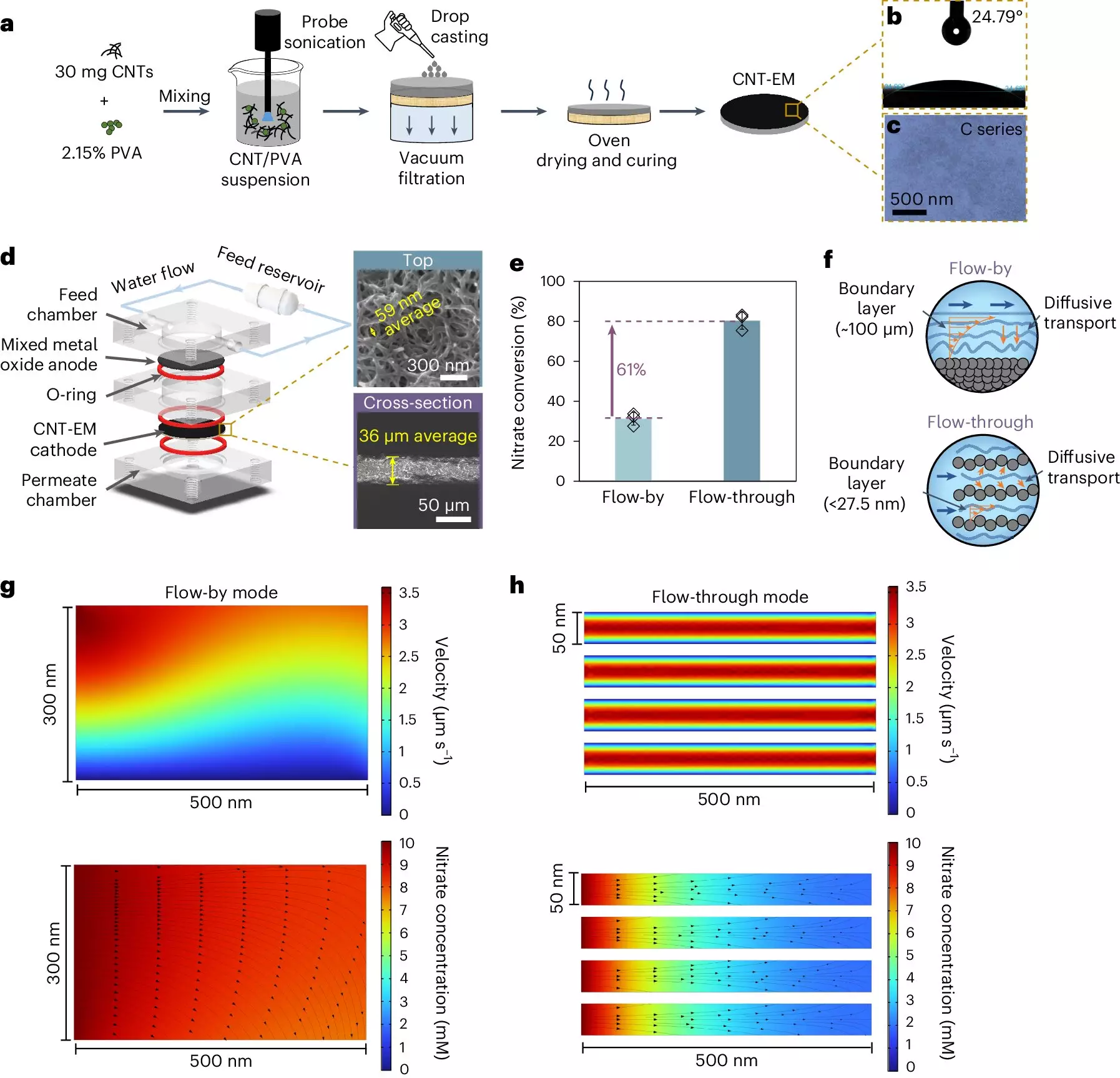Nitrate contamination in drinking water represents a significant challenge, jeopardizing both environmental integrity and public health. This issue follows from excessive agricultural runoff, wastewater management, and various anthropogenic activities, leading to elevated nitrate levels in freshwater systems. Over the years, health organizations have pointed to high nitrate concentrations as potential culprits behind various health concerns, including methemoglobinemia, more commonly known as “blue baby syndrome,” which affects infants by limiting oxygen transport in the blood. Thus, developing effective means for nitrate removal from the water supply is imperative, not just for regulatory compliance but for safeguarding community health.
Innovative Solutions from Yale’s Research Team
In the face of this environmental crisis, Yale researchers have pioneered an innovative solution that could redefine how communities tackle nitrate in their water supplies. Lea Winter, an assistant professor of chemical and environmental engineering, and her team are advocating for the use of electrified membranes crafted from carbon nanotubes. This groundbreaking research, published in *Nature Water*, aims to not only address nitrate levels but also to do so more efficiently than existing methodologies.
Traditional nitrate removal methods usually hinge on either separating the nitrate from water or destroying it entirely. The former often leads to secondary waste streams that cannot be discarded carelessly into the environment, while the latter, particularly biological denitrification approaches prevalent in wastewater treatment plants, can struggle with efficiency due to their reliance on sensitive microbial processes. These biological systems may provide a solution, yet they require exact metadata—for instance, temperature and pH—to function correctly, making them vulnerable to operational inconsistencies that can greatly extend processing time.
A Cutting-Edge Electrocatalytic Approach
At the forefront of this new technology is the concept of electrocatalytic processes, which dramatically enhance the speed and efficiency of nitrate destruction. This method offers more control over the nitrate reduction process and can dramatically decrease the time needed to convert nitrates into innocuous substances. However, conventional electrochemical systems involve flat plate electrodes, which can be somewhat inefficient because the boundary layer—the slow-moving fluid layer adjacent to the electrode surface—limits how quickly nitrates can be transported to the active site for reaction.
Winter’s team tackles this limitation head-on with their unique electrified membranes, consisting of tightly packed carbon nanotubes set within a supportive polymer framework. The pores within these membranes measure just 50 nanometers, a significant reduction compared to the 100 micrometer layers seen in traditional systems. This minimizes the sluggish transport of nitrates, allowing for nearly instantaneous reaction and conversion of nitrates.
Accelerating Nitrate Destruction
One of the standout features of Winter’s innovative membranes is their remarkable speed in rendering nitrates harmless. Traditional methods require prolonged periods—often several hours—to achieve substantial reductions in nitrate levels. In stark contrast, Yale’s membranes achieve approximately 80% nitrate removal in just 15 seconds. This staggering reduction in time not only enhances the practicality of the approach regarding real-world applications but also suggests potential for widespread adoption in various water treatment facilities.
The promises of this new technology extend beyond mere efficiencies; they contain the potential for incredible cost savings and infrastructure simplification. Water treatment facilities may be able to adapt rapid nitrate removal processes without needing to heavily invest in complex chemical treatment methods or additional personnel, thus lowering operational expenses while enhancing water quality standards.
Real-World Testing and Future Implications
To validate their research in practical scenarios, Winter’s team conducted tests using water sampled from Lake Wintergreen, an area conveniently near their campus. They deliberately introduced a controlled amount of nitrate to analyze how well their system could perform in typical real-world conditions. The research focus on treating low nitrate concentrations mirrors challenges faced across various regions, where contamination often presents at much lower levels.
The implications of successful nitrate removal are profound, affecting agricultural strategies, public health infrastructures, and the very sustainability of water resources in ecosystems. The transition from theoretical explorations to tangible, effective solutions marks a critical step forward in both engineering and environmental science domains.
By addressing the daunting challenge of nitrate contamination with innovative technology, Yale researchers, led by Lea Winter, carve out a path toward cleaner drinking water and restored environmental health, nudging society closer to more sustainable living practices in the long term.


Leave a Reply